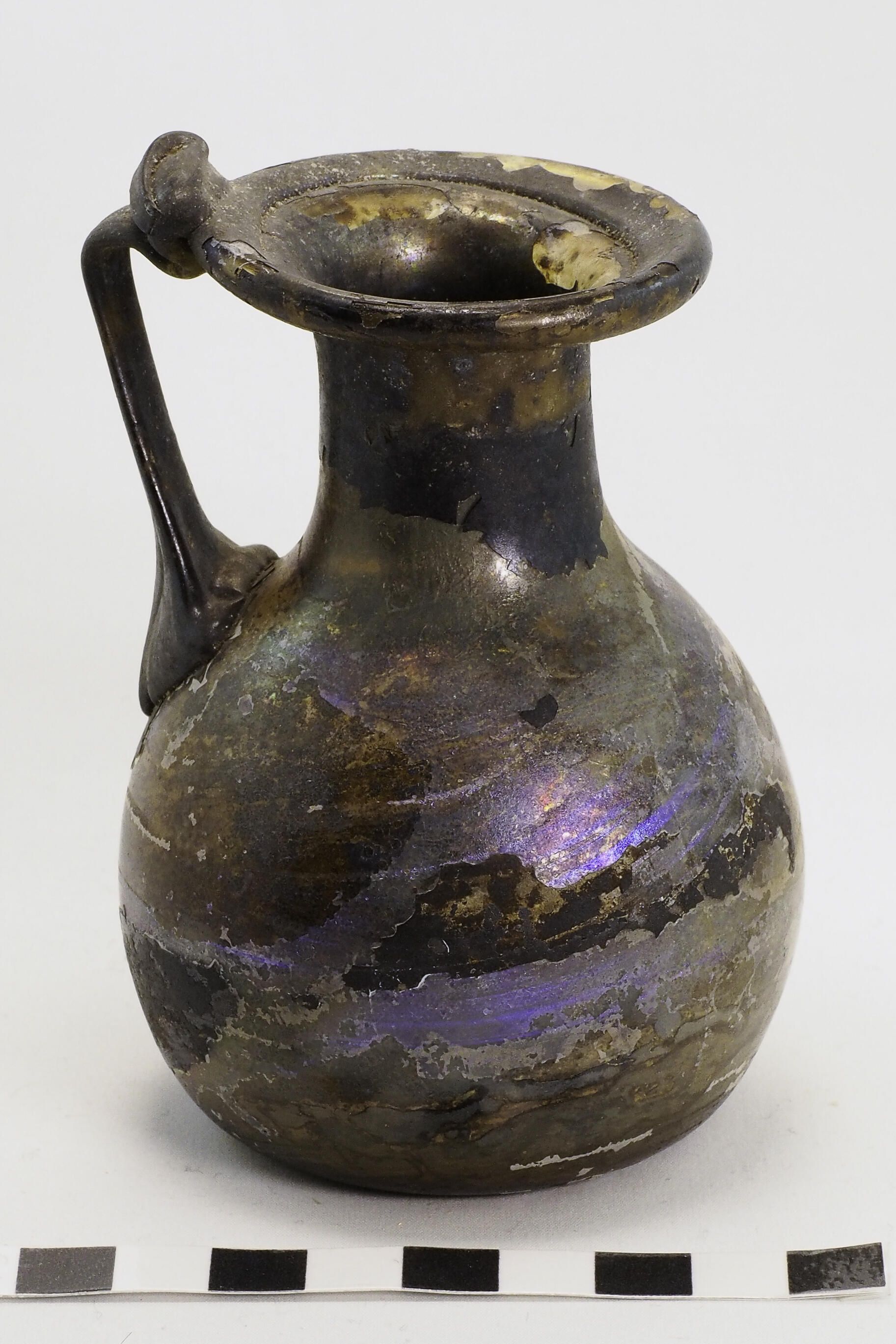Round Juglet
Name/Title
Round JugletEntry/Object ID
11NE-Mi60-196Description
The tubular rim is folded inwards. The short cylindrical neck transitions smoothly with a round shoulder into the globular body. An angular handle is dropped into a gather on the shoulder then pulled up and in to attach to the rim. It was then folded down against the top and underside of the mouth then cut off at the top. The base is concave and the vessel is intact with iridescence.Use
TablewareContext
In ancient Rome, the meal was eaten in a reclined fashion, where diners would lay upon couches cushioned for the elite or wooden/stone benches for the lower class. The elite patrician families dined off gold or silver dishes, other elites dined off bronze, but the lower elites and lower classes dined off glass or pottery. At meals, jugs would be filled with wine with beakers next to them for drinking. As ancient Romans ate with their hands, they were brought glass bowls by slaves who poured water from jugs so the Romans could wash their hands in between courses. This vessel was likely used in the latter scenario.Made/Created
Date made
200 CE - 400 CETime Period
Roman Imperial, Late AntiqueEthnography
Culture/Tribe
Near Eastern - Syro-Palestine

